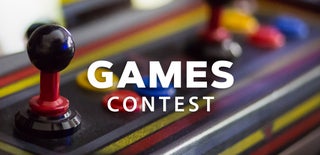Introduction: Hex
Hex is a board game invented independently in the 1940s by two mathematicians, Piet Hein and John Nash (the Nobel prize-winning game theorist and subject of the book and film"A Beautiful Mind"). It involves a grid on which counters are placed sequentially on intersections by opposing players, both of whom are trying to connect two sides of the board. It is very easy to teach and quick to play, but commercial boards don't exist and it mostly gets played on a mat with Go pieces. This instructable provides plans for a Hex set to be lasercut from 1/8" plywood and played with marbles. Don't have a lasercutter? I've also designed a version for 3D printing. It should be printed out of three different colors of resin. Don't have either but would like to try the game? I've also supplied a pdf version that can be printed out and played with pen and paper.
Step 1: Cut It Out
The design includes storage for the marbles and a lasercut lid. I designed it using Fusion360 for the grid, arrows and supports and MakerCase for the box.
Laser cut the file Hex.cdr (or .ai or .pdf, all options are attached) using a through cut for the black lines and a scoring line for the red lines (the rhombus grid and the grid on the box lid). Or forego red altogether if you're not fussed by the decorations. The settings (speed, laser power) you use will depend on your laser cutter. I set up the scoring line to be 5 times faster than the cutting line. The bed of the Speedy360 I used to cut this out on is 800 x 500 mm, so you may have to do some rearranging to get the pieces to fit on the laser cutter you're using.
Step 2: Assemble
Glue the pieces together using wood glue as shown:
1. make the finger-jointed box using a thin line of white glue along the tabs; hold together with rubber bands while drying.
2. Glue the rhombus grid to the oddly shaped piece; let dry under a weight.
3. Slot together the supports in a diamond shape and put inside box. Press-fit the grid into place. Bonus: you have a secret compartment in the middle!
The weird shape of the layer under the rhombus creates a negative space in the shape of arrowheads (think of the arrow between the E and the x in the FedEx logo). They're designed to be stocked in opposite corners with the same color of marbles, so as to indicate the direction of play for each player.
Step 3: Stock With Marbles
You need two colors of 60 1/2" marbles. I had some white slingshot ammo and bought some blue aquarium marbles. In practice games usually use only a fraction of the maximum number of marbles (121). I filled both sides with marbles anyway for aesthetic reasons.
Step 4: Play

From Wikipedia: "Players take turns placing a stone of their color on a single cell within the overall playing board. The goal for each player is to form a connected path of their own stones linking the opposing sides of the board marked by their colors, before their opponent connects his or her sides in a similar fashion. The first player to complete his or her connection wins the game. The four corners each belong to both adjacent sides."
More info on Hex can be found at boardgamegeek.com.
Hex can't end in a draw. The starting player has an advantage - we play the loser of the last game gets to go first. It's easy to learn but very difficult to master.
Step 5: No Laser Cutter?
Here's some STL files, so you can 3D print it. I've included some playing pieces, with the assumption that anyone printing this is going to do so at a smaller scale than the original. The print is in multiple parts, and is intended for three different colors. Print as follows:
Print 1 (e.g. in red, but the color doesn't matter): print 2 copies of hexredarrow1.stl and 60 copies of hexpiece.stl.
Print 2 (e.g. in blue): print 2 copies of hexbluearrow1.stl and 60 copies of hexpiece.stl.
Print 3 (some other color): print one copy of hex3dframe.stl.
The arrows push-fit into the frame and are used for storage of the playing pieces as well as indicating gaming direction.
I printed the set using default settings (0.15 mm resolution, 10% infill) and no supports on a Creality Ender 3 (which is an astonishingly good little printer for <$250; highly recommended).
Step 6: No Laser Cutter or 3D Printer?
Print out the attached pdf and play using paper and markers.
Hex is a quick and absorbing game. Try it - it has a ton of depth. If you make or print a set after reading this, please post a picture using the "I made it!" function. Enjoy!
Attachments

Second Prize in the
Games Contest



















